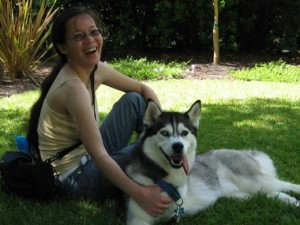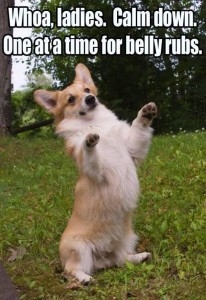
Call us Now ![]() +91-8744012053
+91-8744012053
Mon - Sat ~ 10:00 AM - 6:00 PM
Follow & Like
.png)


Call us Now ![]() +91-8744012053
+91-8744012053
Mon - Sat ~ 10:00 AM - 6:00 PM
Follow & Like
.png)


Ever wondered Why your Dog digs Belly Rubs? There are certain spots on your dog’s body that are more sensitive and greatly respond to loving touches. Caressing those areas can overwhelm the pooch with joy or a deep sense of relaxation. So, what are those sweet spots where dogs beg to get massaged and Why?
Cute dog Demands belly rub six times. See the viral video:
Source- Daily Mail UK
1.The rump: The hind part of a dog’s body especially just below the tail is a place where it will love to be scratched. Dr. Bonnie Beaver, professor of veterinary medicine at Texas A&M University has shed some light on the reason for this. According to the doctor, the rear is a spot that is difficult to reach by the dog itself. Hence it likes intervention by humans when it comes to scratching it.

When your dog enjoys and demands a belly rub, it means that it trusts you completely. Its a primal submissive instinct in dog. Image – shibashake.com
2.Backside of the neck: Another area where dogs aren’t able to reach is the back of their necks. Also wearing a dog collar around the neck can make the area more sensitive and itchy. It’s advisable to remove the dog collar when home. Indulge your dog every once in a while with massaging this sweet spot.
3.Shoulders: Gently massaging a dog’s shoulders is something your pet will welcome. Most canines are comfortable being petted here as it is one of those off-limits spots that can’t be reached by them.
When petting an unfamiliar dog, remember to reach it from the side and not from top. Dogs don’t like any contact near their heads and will feel threatened if done so.
4.Rub Below the chin to make your dog happy:
5.Chest and Belly Rub: Most canines enjoy being rubbed and gently scratched on the chest without feeling vulnerable. They feel comfortable with this position as it enables them to see/be aware of the masseur and their surroundings.
If your dog is injured or experiencing pain in one of these areas, the same soothing touch can elicit a yelp or a bite. You might not even be aware of its illness or injury initially. But once it has come to your notice, consult the vet. A negative experience with a human touch around a certain spot in the past can frighten the dog if touched on the same spot and make it snappy too.
What are the right ways to pet a dog?
When you wish to pet a neighbor’s dog that isn’t known to you that well, you’ll have to follow certain greeting etiquette here.(image-Pinterest)

Squat down with your knees bent to reach the dog’s level. Then turn sideways to appear non-threatening (this works really well with a shy or fearful dog) and make very little eye contact. The aim is to let the dog initiate contact, by approaching you first. The human must adopt an indirect approach here. Place your hands on your thighs with the palms facing up and wait for the pooch to come toward you. If it leans forward with a loose body posture from head to tail, relaxed mouth and some eye contact, you can respond with gently stroking its chin, back of the neck or chest and always pet in the same direction its fur has grown in. Hand movements must be chosen wisely. Do not touch its head as this way your hand may block its eyes making it feel vulnerable. According to online Dog Blog, vetstreet.com dogs do not like being touched on their noses, ears, legs, paws and tail.
If the dog moves away instead of leaning in, or rolls over on its back, do not pet it. Dr. Meghan E. Herron, head of the Behavioral Medicine Clinic at The Ohio State University Veterinary Medical Center, has offered insight into a dog rolling over and exposing his belly. She clarifies this isn’t an invitation to rub its belly especially when a stranger is trying to approach the dog. Often dogs roll over on their backs to show their bellies to indicate they are feeling threatened and want to be left alone. It is a submissive posture assumed by a fearful dog to please a threatening dog.
Pet a dog that has initiated the contact for a brief period. Stop after few seconds to see if the dog leans in asking for more of those affectionate strokes. In case a dog disinterested and uncomfortable with your patting, it will move away and exhibit some signs of discomfort. If the dog licks his lips, yawns, stiffens his/her body, lowers his head, or exposes the whites of his eyes, you must stop the petting immediately. A dog could also growl or show its teeth to express displeasure.
Kids must be guided to adhere to these techniques when approaching a new dog.
Some don’ts to be kept in mind-